In mid-March, I spent 10 days in Seattle—the first half of the trip to work at the Association for Asian Studies Annual Conference, the second half to enjoy the city. Contrary to my expectations, the weather was mostly beautiful during my vacation, and I only needed my umbrella on the very last morning. Seattle has a lot to offer its visitors; in addition to the notes I’ve written up below, there were a number of other places I’d hoped to go but didn’t have enough time to see. I was also there too early in the spring to make a trip out to any of the nearby National Parks, which were still not fully open due to winter weather conditions.
So … obviously, I need to go back.
What I Did
Because I have a few trips in the U.S. scheduled in 2024, I decided to spring for an upgraded Detroit Institute of Arts membership this year—one that includes reciprocal admission to museums across the country through the ROAM program. In Seattle, I concluded that this had definitely been a good choice, as I was able to visit nearly every museum (except the Space Needle and Chihuly Garden) without paying entry fees. Between my Seattle trip and the three times I’ve been to the DIA so far, I’ve nearly covered the $180 price of the membership.

Space Needle
Of course, right? The Space Needle is Seattle’s most visible attraction, and a trip up to the viewing platform is all but required. When the first morning of my vacation dawned clear and sunny, I made a beeline for the Space Needle rather than risk missing out on perfect weather. There was no line at all, so after a quick perusal of the exhibits chronicling the tower’s 1961 construction—in only 400 days!—I stepped into the elevator and was whisked to the top. I hung out up there for a while, taking in the incredible views of city, mountains, and water, then bought a glass of cider at the skybar and read for a bit, stopping frequently to look out at the horizon. Descending one level to the lower viewing platform, I realized that I was standing on a rotating glass floor and instantly became weak-kneed with vertigo. I took that as my cue to leave and rode the elevator back down, exiting—of course—into a massive gift shop.
Honorable mention: Late on my first afternoon in Seattle, desperately fighting to stay awake, I walked down to the waterfront and rode the Great Wheel. It was … fine. Nice views, peaceful ride, probably not quite worth the $20 ticket when all was said and done. But if going to the Space Needle isn’t manageable, the Great Wheel is a serviceable option.
Chihuly Garden and Glass
At the Space Needle I had purchased a combo ticket that also included entry to the museum next door featuring the work of glass artist Dale Chihuly. I arrived just in time to join a short tour of the exhibits and learn about Chihuly’s work. As I had only been previously familiar with his flowers, it was eye-opening to find the museum filled with a variety of glass shapes and sculptures, from a series of vases in neutral shades inspired by Native American baskets and blankets to a room filled with vibrant pieces depicting the ocean floor. Out in the garden, large glass sculptures mingled with landscaping and shrubbery, the Space Needle towering over it all. I toured the entire museum and garden once, stopped to eat lunch, and then walked through a second time, unwilling to leave before I had committed it all to memory. This was, without question, my favorite place to visit in Seattle.

Seattle Kraken Hockey Game
The Seattle Kraken are the NHL’s newest team and have attracted a devoted fan base in only three years. Although the game itself wasn’t great for the home team (the Kraken lost to the Buffalo Sabres, 6-2), the crowd was amped to be there and it was easy to get swept up in the excitement. (I didn’t go so far as to purchase a stuffed octopus tentacle to wave, though.) Climate Pledge Arena bills itself as “the most progressive, responsible, and sustainable arena in the world,” which is quite a claim—if you’re interested in learning about all the behind-the-scenes details, there’s a special tour—I was tempted, but in the end decided against the extra $49 ticket.

National Nordic Museum
Located in Seattle’s trendy Ballard neighborhood, the museum tells the history of Scandinavian immigrants who once worked in the area’s logging and fishing industries. The museum consists of two large galleries: the first on life in Nordic countries, the second on Nordic immigrant life in the Pacific Northwest. A video at the beginning asks, “What does it mean to be Nordic?” and emphasizes the unexpected diversity of the region, as well as the cultural emphasis on appreciation for nature, solid craftsmanship, and strong social values. The whole museum is, not surprisingly, a beautiful, light-filled, and calming space.

Museum of History and Industry
MOHAI, as this museum about Seattle’s past is known, occupies the former Naval Reserve Building in Lake Union Park. It’s a big, dense institution—I have to admit that I skimmed through the final few exhibit spaces, tired and hungry after several hours of reading placards. The museum devotes a good amount of attention to the history of Indigenous communities getting pushed off their land by early settlers from the east in the mid-19th century before turning to the story of Seattle’s boom years during the Klondike Gold Rush and then again during World War II. It finishes with a celebration of the city as a center of technology and innovation at the end of the 20th century.
Honorable mention: The MOHAI exhibits were all interesting, but … a lot. So if you’re short on time or attention, my recommendation is to head to Klondike Gold Rush National Historical Park in Pioneer Square, which covers much of the same 19th-century history but in a fraction of the space. (Bonus: free admission)
Wing Luke Museum
I inadvertently got a private tour of this institution in Seattle’s Chinatown/International District—no one else was waiting with me when the doors opened at 10am, so the guide and I walked around together. The museum tells the story of Seattle’s Asian immigrants and Asian American community, which has repeatedly built up enclaves for itself only to find residents displaced in favor of construction projects like the I-5 freeway and Kingdome. In addition to the museum exhibits, there are several historic buildings to visit: an old Chinatown general store, a single-room occupancy hotel where Asian laborers lived, and a family association’s meeting space. There’s also a prominent exhibit devoted to Bruce Lee, who (as I learned) spent 1959-64 in Seattle and opened his first kung fu training studio there.

Seattle Art Museum
I go to a lot of art museums, and sometimes … well, they all start to blend together. So when I checked in at the Seattle Art Museum, I tried a new approach: I asked the ticket-seller what SAM is best known for, as well as her favorite exhibit. She immediately advised me to head straight to the Porcelain Room, where I found a dazzling display of fine dishware. My next stop was a massive special retrospective of Native American visual artist Jane Quick-to-See-Smith’s work, which draws on both Native artistic traditions and stereotypes about American Indians to challenge and critique U.S. government policies. A walk through the galleries of Aboriginal and Indigenous art and I felt like I had enjoyed the highlights of SAM without turning my visit into a slog.
What I Ate and Drank
A Family-Style Middle Eastern Feast
Part of my job every year is to find a restaurant where the AAS Board of Directors can gather for a reasonably priced dinner after its all-day meeting. In Seattle, I picked Mamnoon, which bills itself as serving classic Middle Eastern fare with a Pacific Northwest twist. Every dish placed in front of us seemed better than the last: an appetizer plate of dips and spreads, fattoush salad, spiced potatoes, falafel, and a platter of roasted salmon and chicken kebabs with flavorful rice. Dinner at Mamnoon stands out as the best overall meal I had in Seattle.

Dim Sum
As much as I love living in Ann Arbor, its Chinese food options are disappointing. There are weekends when I would like nothing more than to gorge myself on dim sum and find myself thinking wistfully of restaurants elsewhere. This explains why I went to Dim Sum King for breakfast not once but twice. Even better, they sell most dim sum items by the piece rather than as small plates, so I could try a little of everything. The steamed rice shrimp rolls, turnip cake, and sesame balls with red bean paste were my favorites.
Honorable mention: When a colleague asked me if I wanted to join her for dinner at Din Tai Fung, I jumped at the opportunity. Din Tai Fung is an upscale Taiwan-based chain known for its steamed soup dumplings; though not the most outstanding example of the dish you’ll find, they’re reliably delicious. I could have easily gone through two steamers of them on my own.

Fresh Oysters
For a plate of oysters, I kept it simple and headed down to Emmett Watson’s Oyster Bar at Pike Place Market. It’s a small, no-frills kind of place, serving a straightforward menu of seafood classics. I ordered a dozen fresh oysters and slurped them down, delighting in the tangy mixture of brine and cocktail sauce.
A Surprisingly Good Museum Café
Museum restaurants are often convenient but overpriced, serving elevated but lackluster versions of cafeteria classics. One of my colleagues, however, told me that The Bar at Chihuly Garden and Glass was a legitimately good restaurant and worth visiting during my time at the museum. I ate lunch there, enjoying crispy fish and chips followed by an outstanding bourbon bread pudding. The Bar is definitely a cut above all other museum cafes, though lunch there will take more time than a trip to the food hall next door at the Seattle Center Armory (which is also the more affordable and kid-friendly dining option). The restaurant is decorated with Dale Chihuly’s collections of … stuff: bottle openers, pocket knives, alarm clocks, accordions, juicers, and much more, so there’s plenty to look at while you eat.
Honorable mention: Freya, the café at the National Nordic Museum, is a lovely place to grab coffee and a baked good. I also got to talking with the server and she recommended her favorite aquavit so I could try a shot; it tasted like vodka with a rye-flavored finish.

Where I Stayed
For the vacation portion of my trip I moved from the Sheraton conference hotel to The Arctic Club. Restored to its Gold Rush-era charm, the hotel isn’t as sleek as the Sheraton and doesn’t have as many amenities, but it’s decorated with walruses (there’s a plush one in the room to keep guests company during their stay) and offers a complimentary hot breakfast every morning. It’s also very convenient to public transit, with many bus routes and a light rail station just steps from the front door.
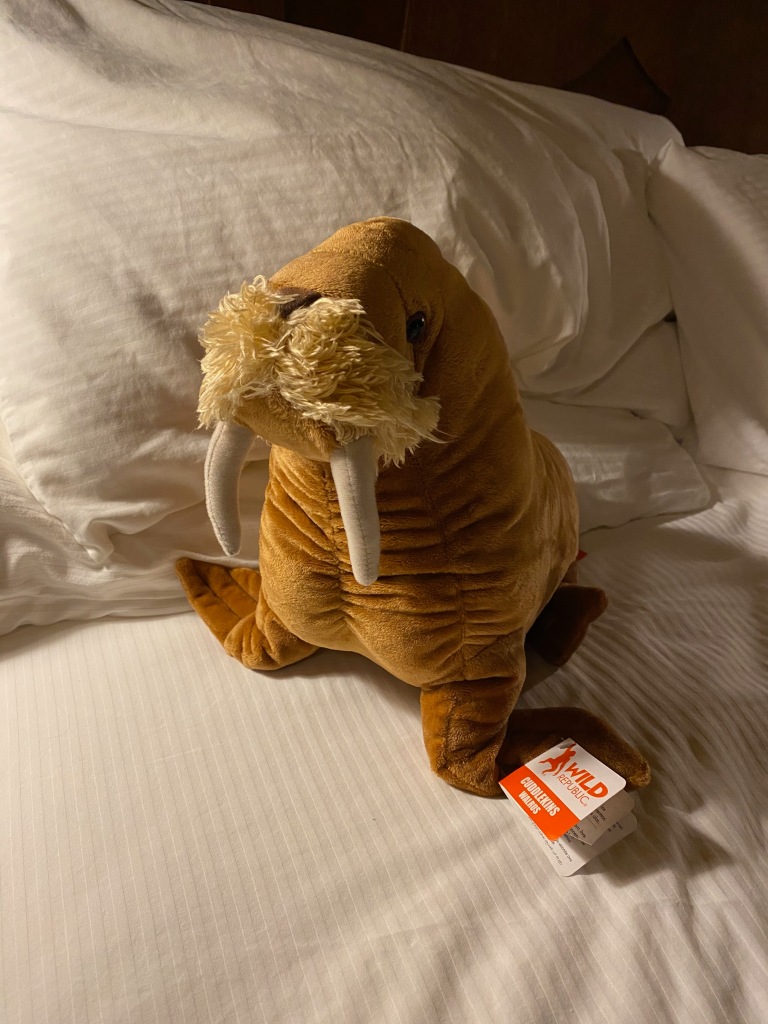
Featured photo: The Seattle Public Library, March 19, 2024.

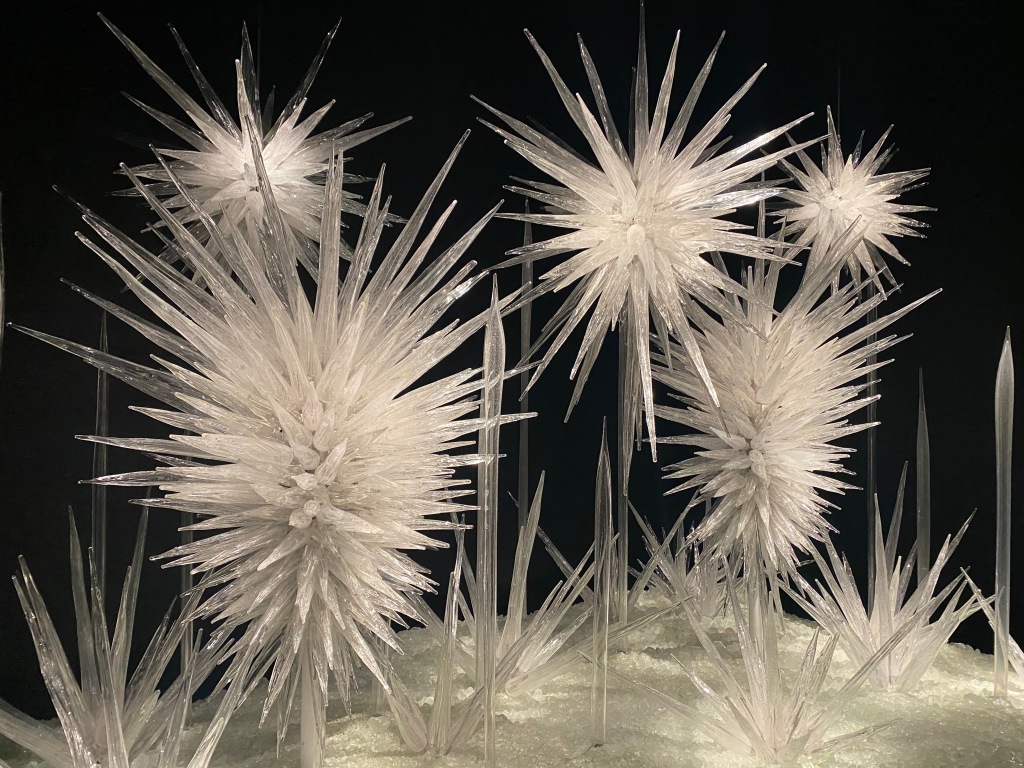


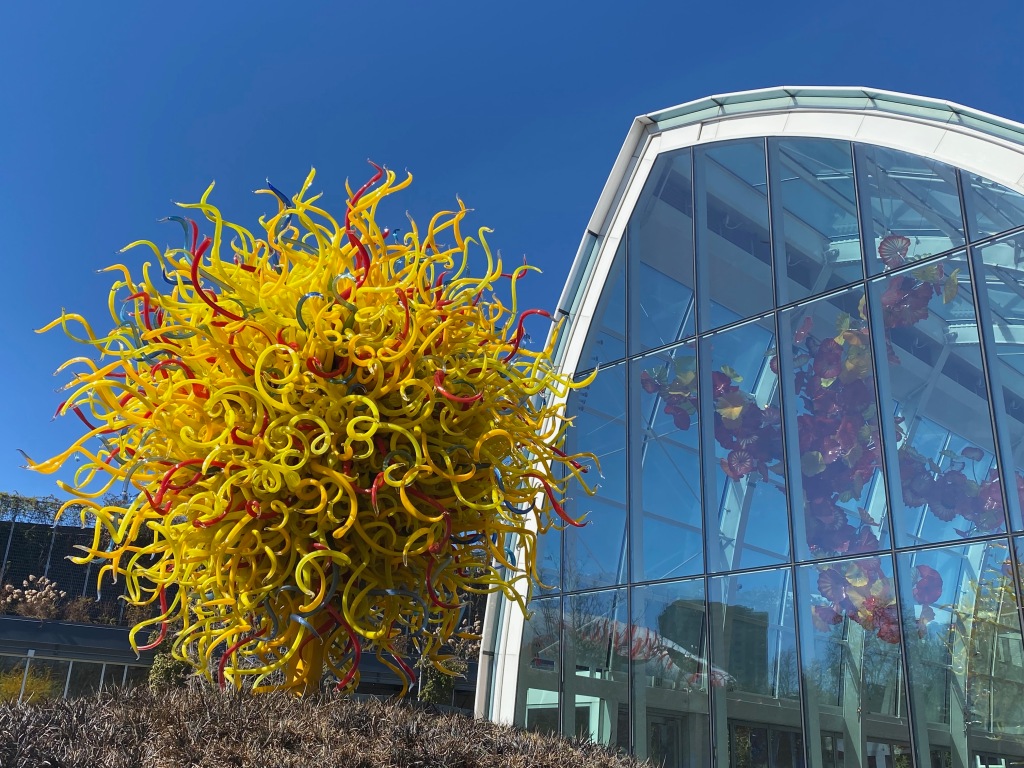
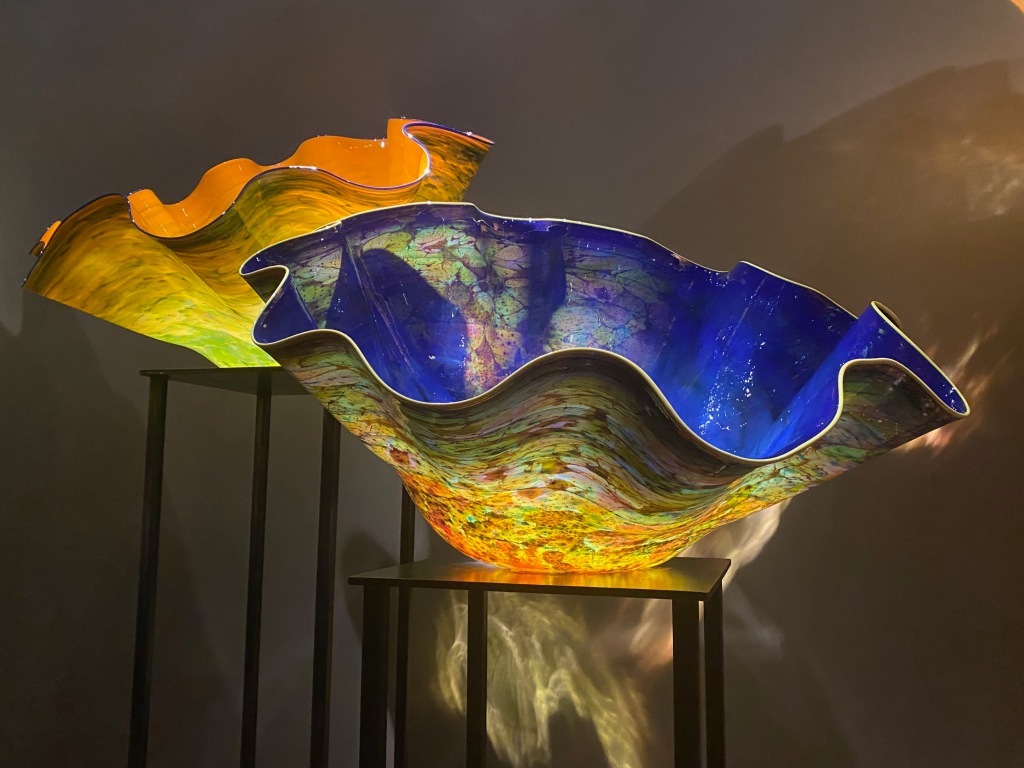
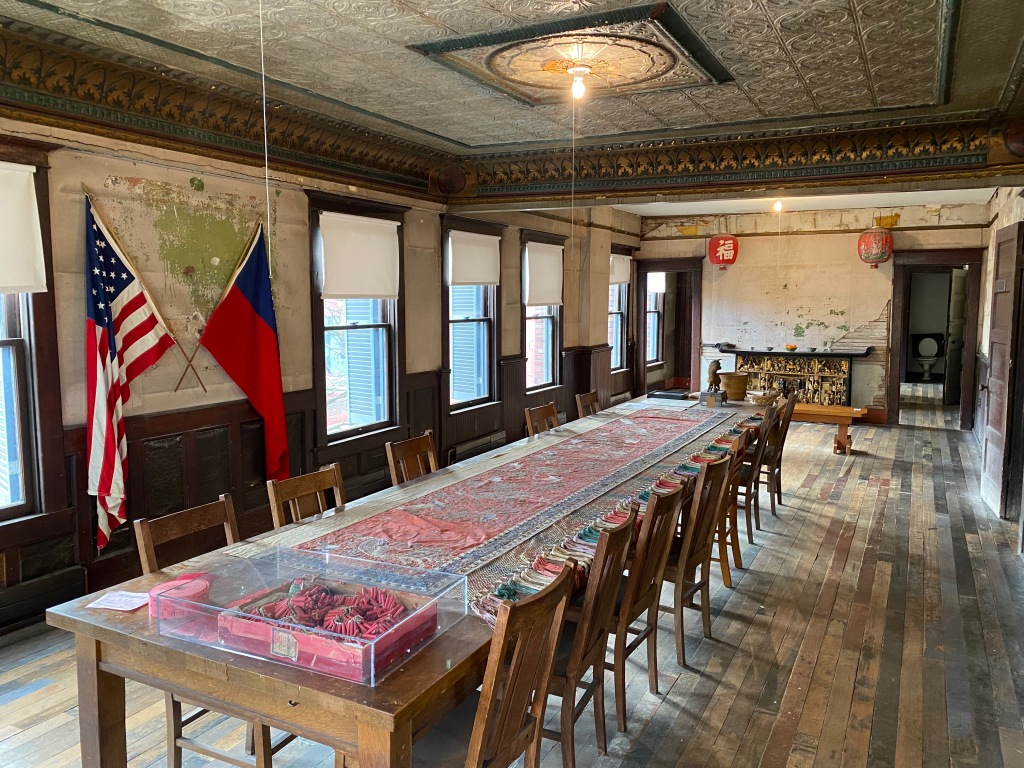

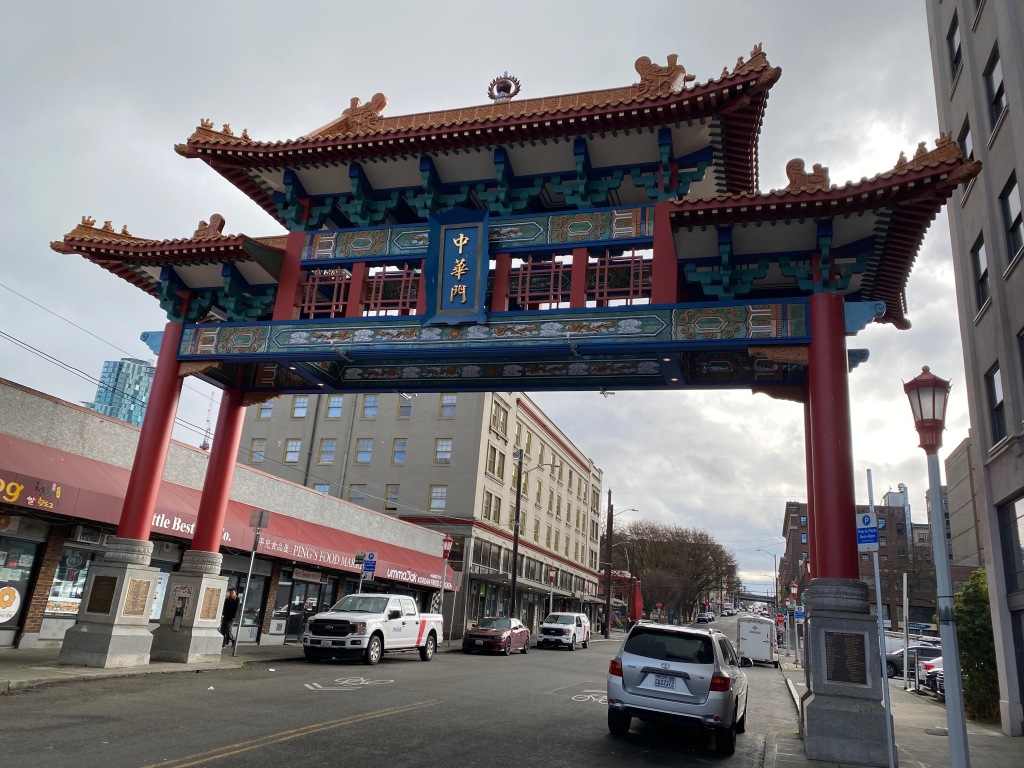
Leave a comment